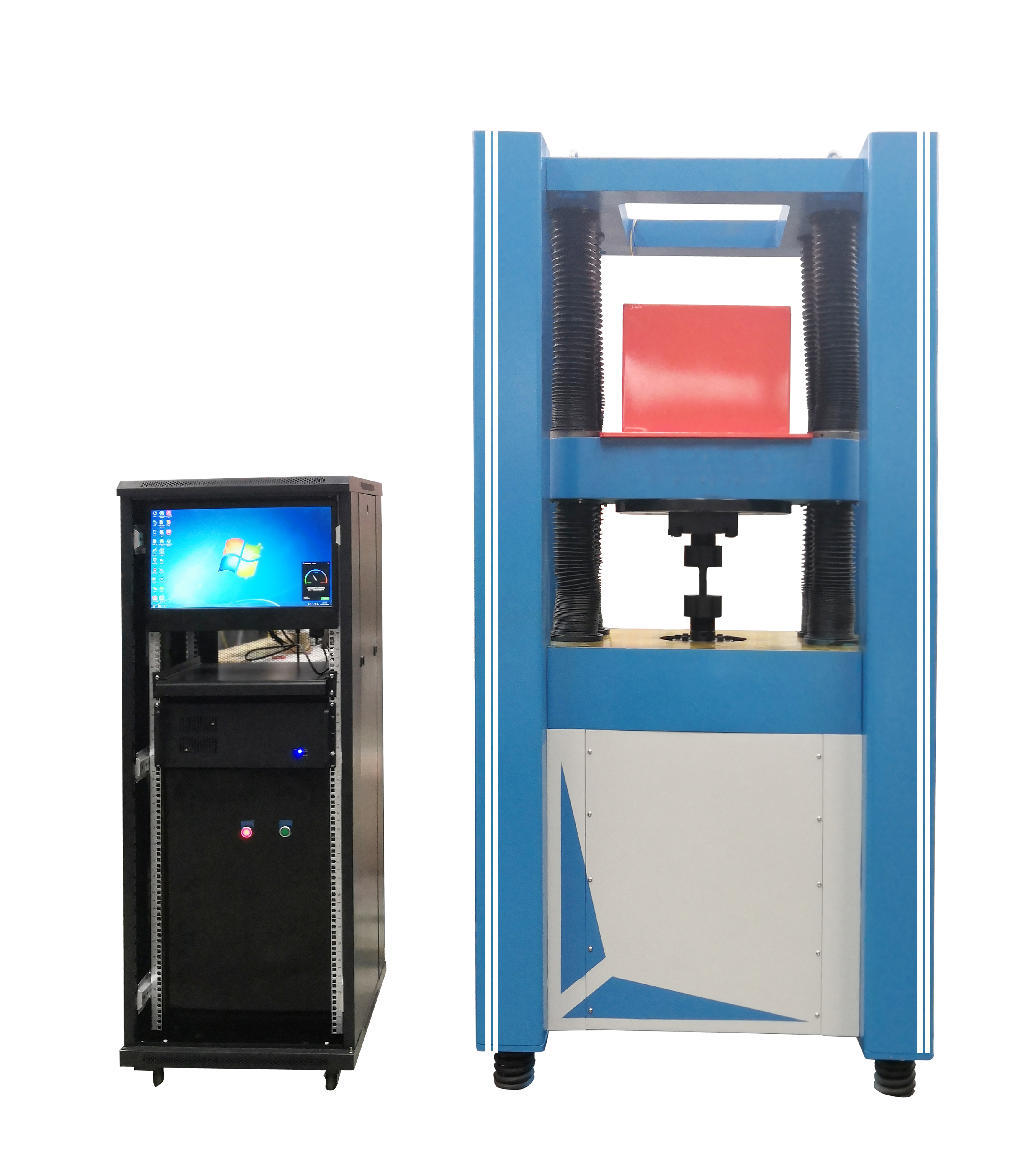What methods are available for fatigue testing of metals?
Metal material testing machines can predict the fatigue strength of materials or components under alternating loads, generally this type of test cycle is long and the equipment required is complex, but because general mechanical tests such as static tensile, hardness and impact tests, are not able to provide the performance of materials under repeated alternating loads, so for important zero components to fatigue test is a must.
Some common test methods of metal material testing machine usually include single-point fatigue test method, lifting method, high-frequency vibration test method, ultrasonic fatigue test method, infrared thermal imaging technology fatigue test method, etc.
1、Single-point fatigue test method
Applicable to metal material components at room temperature, high temperature or corrosive air under rotating bending load conditions of service. This method is limited in the number of specimens, can approximate the fatigue curve and roughly estimate the fatigue limit. The fatigue test machine required for the test is generally bending fatigue test machine and tensile testing machine.
2、Lifting method fatigue test method
Lifting method fatigue test is a more common and accurate method to obtain the fatigue limit of metal materials or structures, in the conventional fatigue test method to determine the fatigue strength or in the life of the material or structure of the fatigue strength can not be directly determined by the test, the general use of lifting method fatigue test to indirectly determine the fatigue strength.
It is mainly used to determine the random characteristics of the fatigue strength of materials or structures in the medium and long life zones. The required testing machine is generally electro-hydraulic servo fatigue testing machine.
3、High frequency vibration fatigue test method
Conventional fatigue test in the alternating load frequency is generally lower than 200Hz, can not accurately measure the fatigue damage of some parts in the high frequency environmental state. High-frequency vibration test uses test equipment to generate alternating inertia force containing cyclic load frequency of about 1000Hz characteristics on the fatigue specimen, can meet the fatigue performance of metal materials in service under high frequency, low amplitude, high cyclic environmental conditions research.
High frequency vibration testing is mainly used for the needs of military and civilian mechanical engineering. The test device usually includes: control instrument, charge adapter, power amplifier, accelerometer, vibration table, etc.
Ultra high frequency universal fatigue testing machine is a new generation of testing machine developed by horizontester according to the requirements of domestic and foreign customers following the progress of world science and
technology. The equipment has the functions of electromagnetic high frequency fatigue testing machine, electronic universal
testing machine and vibration table.First of all, it has all the characteristics of electromagnetic high-frequency fatigue testing machine, but in structure, it adopts unique double four column high stiffness frame, built-in electromagnetic excitation
system, filled with non-metallic damping materials.The working frequency breaks through the traditional high-frequency limit of 300Hz and is expected to reach above 450hz, which can save half of the working time.

4、Ultrasonic fatigue test method
Ultrasonic fatigue test is an accelerated resonant fatigue test method, whose test frequency (20kHz) is much higher than the conventional fatigue test frequency (less than 200Hz). Ultrasonic fatigue testing can be carried out under different load characteristics, different environments and temperatures, etc., providing an excellent means of fatigue research. Ultrasonic fatigue testing is generally used for ultra-high circumferential fatigue testing, mainly for fatigue tests with a circumference of 10^9 or more. High-period fatigue, the material macroscopically mainly behaves as elastic, so the elastic relationship of stress, strain and other parameters are used in the damage intrinsic relationship to deal with, without involving microplasticity.
5、Fatigue test method of infrared thermal imaging technology
In order to shorten the test time and reduce the test cost, the energy method has become one of the important methods of fatigue test research. Fatigue of metal materials is a process of energy dissipation, and temperature change is an extremely important parameter to study the energy dissipation of the fatigue process.
Infrared thermal imaging technology is a wavelength conversion technology that converts the thermal radiation of a target into visible light, using the differences in the thermal radiation of various parts of the target itself to obtain a two-dimensional visual image, and using computer image processing technology and infrared temperature calibration technology to achieve the display, analysis and accurate measurement of the temperature field distribution on the surface of the object. The materials used in the test are usually galvanised, normalised metal materials. To increase the specific emissivity of the metal surface, a very thin layer of infrared transmittance paint is usually applied to the surface of the specimen.

